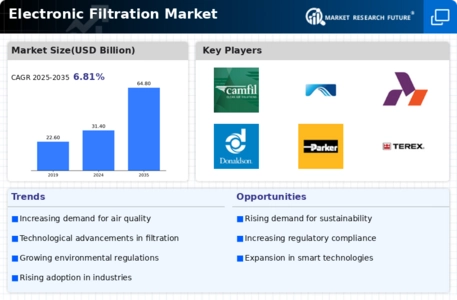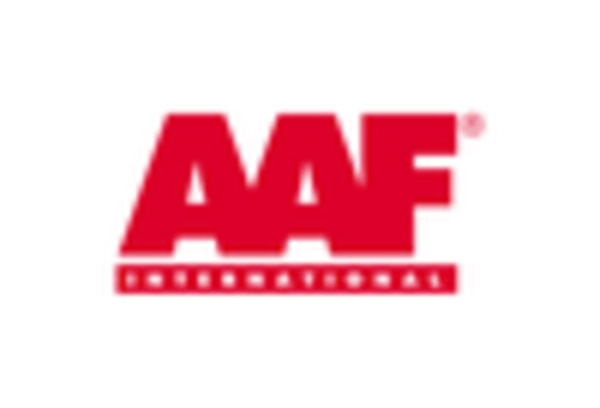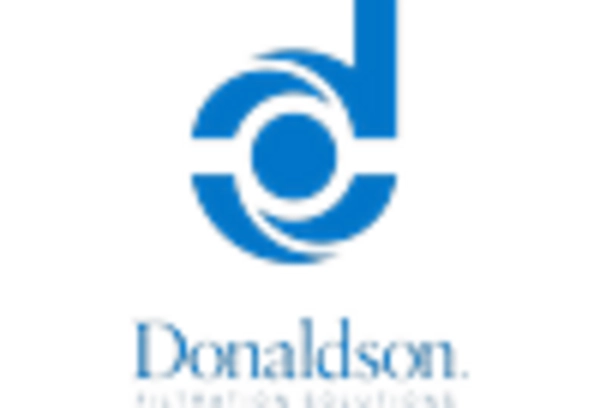Increasing Awareness of Air Quality
There is a growing awareness regarding the importance of air quality, which is significantly influencing the Electronic Filtration Market. As urbanization continues to rise, concerns about air pollution and its health impacts have become more pronounced. Studies indicate that poor air quality contributes to various health issues, prompting consumers to invest in electronic filtration systems for their homes and workplaces. The market for air filtration systems is expected to reach USD 10 billion by 2026, reflecting a heightened demand for effective solutions. This trend underscores the necessity for advanced filtration technologies that can address the challenges posed by deteriorating air quality.
Regulatory Standards and Compliance
Regulatory standards play a crucial role in shaping the Electronic Filtration Market. Governments and international organizations are increasingly implementing stringent regulations aimed at improving air and water quality. Compliance with these regulations often necessitates the adoption of advanced electronic filtration systems that meet specific performance criteria. As industries strive to adhere to these standards, the demand for high-quality filtration solutions is expected to rise. This regulatory landscape not only drives innovation but also creates a competitive environment within the Electronic Filtration Market, as companies seek to develop products that align with evolving compliance requirements.
Shift Towards Sustainable Practices
The Electronic Filtration Market is experiencing a notable shift towards sustainable practices, as consumers and businesses alike prioritize eco-friendly solutions. This trend is driven by a growing recognition of environmental issues and the need for sustainable resource management. Companies are increasingly developing filtration systems that utilize recyclable materials and energy-efficient technologies. Market analysis indicates that the demand for sustainable filtration solutions is likely to increase by 15% over the next few years, as consumers seek products that align with their values. This shift not only enhances the reputation of companies within the Electronic Filtration Market but also contributes to broader environmental goals.
Rising Demand for Water Purification
The Electronic Filtration Market is witnessing an increased demand for water purification solutions, driven by concerns over water quality and safety. Contaminated water sources pose significant health risks, leading to a surge in the adoption of electronic filtration systems designed for residential and commercial use. Market data suggests that the water filtration segment is anticipated to grow at a rate of 9% annually, as consumers prioritize access to clean and safe drinking water. This demand is further fueled by regulatory standards that require higher levels of water purity, thereby creating opportunities for innovation within the Electronic Filtration Market.
Technological Advancements in Filtration Systems
The Electronic Filtration Market is experiencing a surge in technological advancements that enhance filtration efficiency and effectiveness. Innovations such as advanced sensor technologies and artificial intelligence integration are transforming traditional filtration systems into smart solutions. These advancements allow for real-time monitoring and automated adjustments, which improve air and water quality. According to recent data, the market for smart filtration systems is projected to grow at a compound annual growth rate of 12% over the next five years. This growth is indicative of a broader trend towards automation and efficiency in the Electronic Filtration Market, as consumers and industries alike seek more reliable and effective filtration solutions.

















Leave a Comment